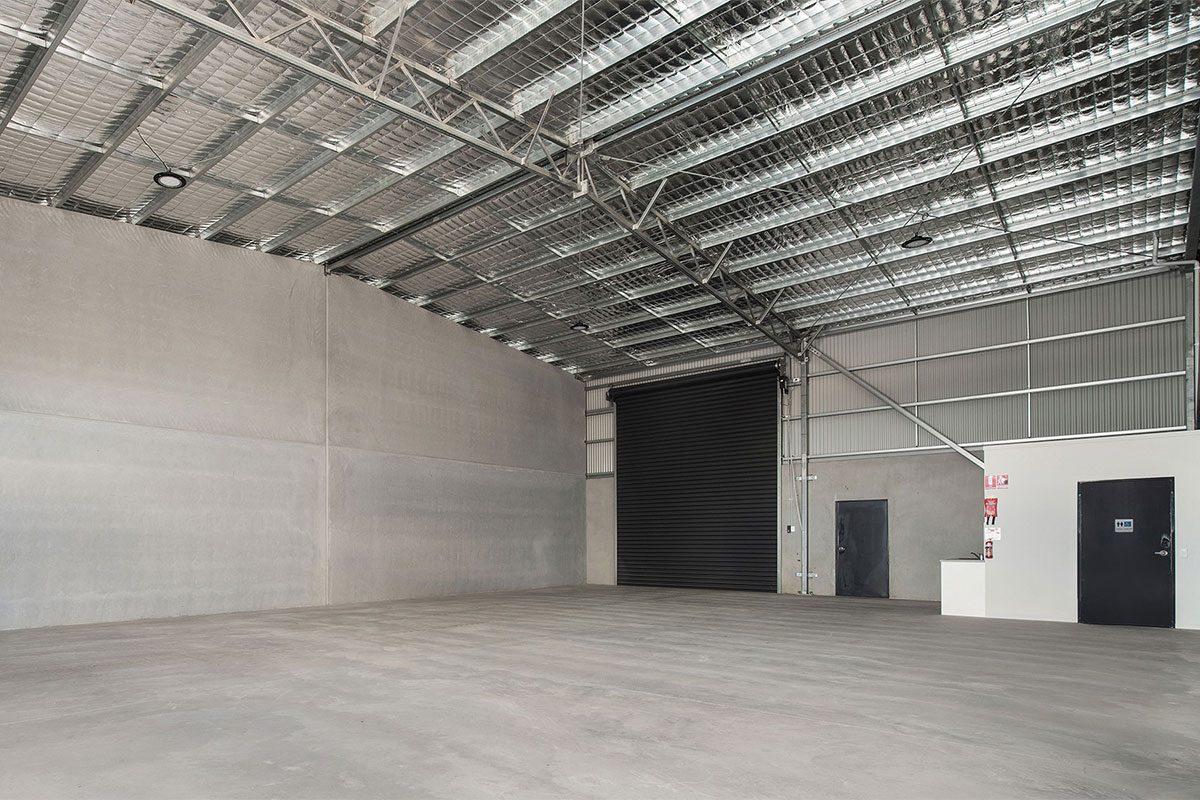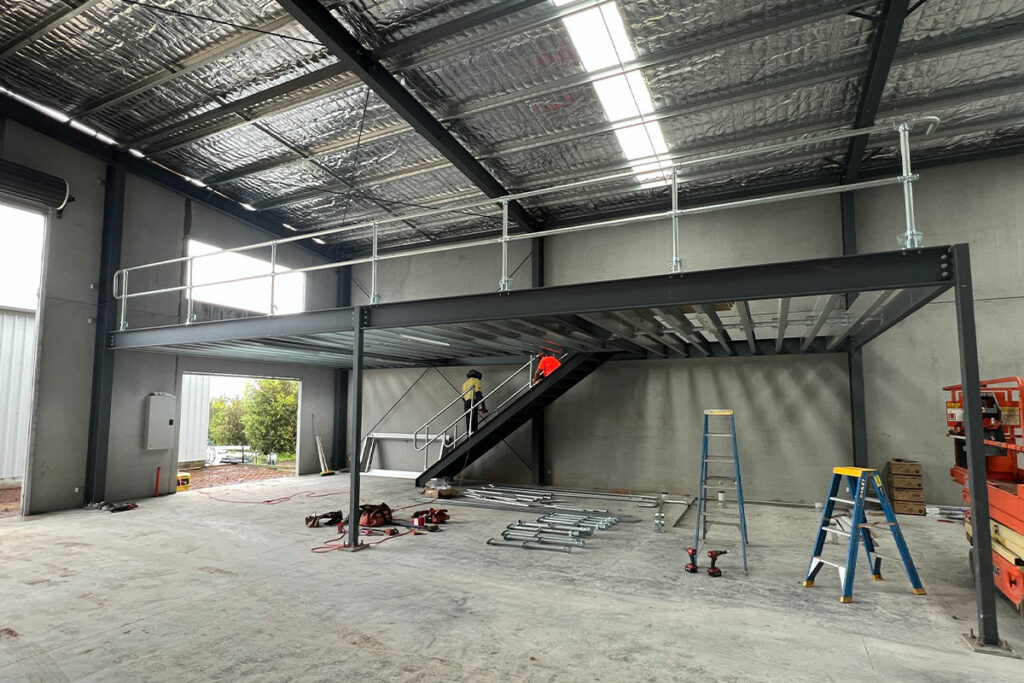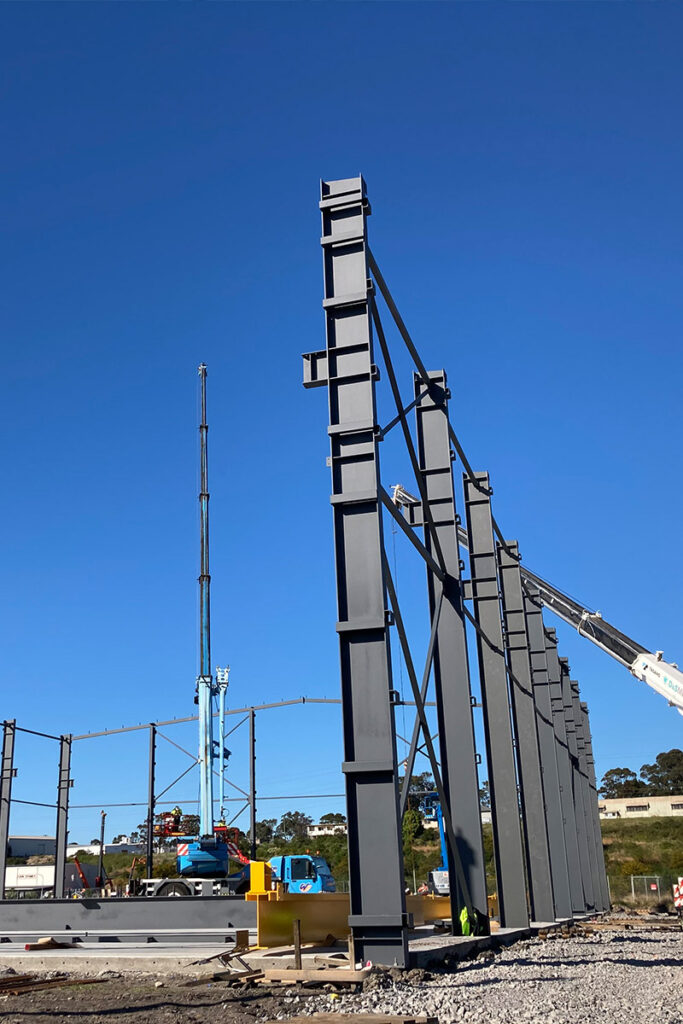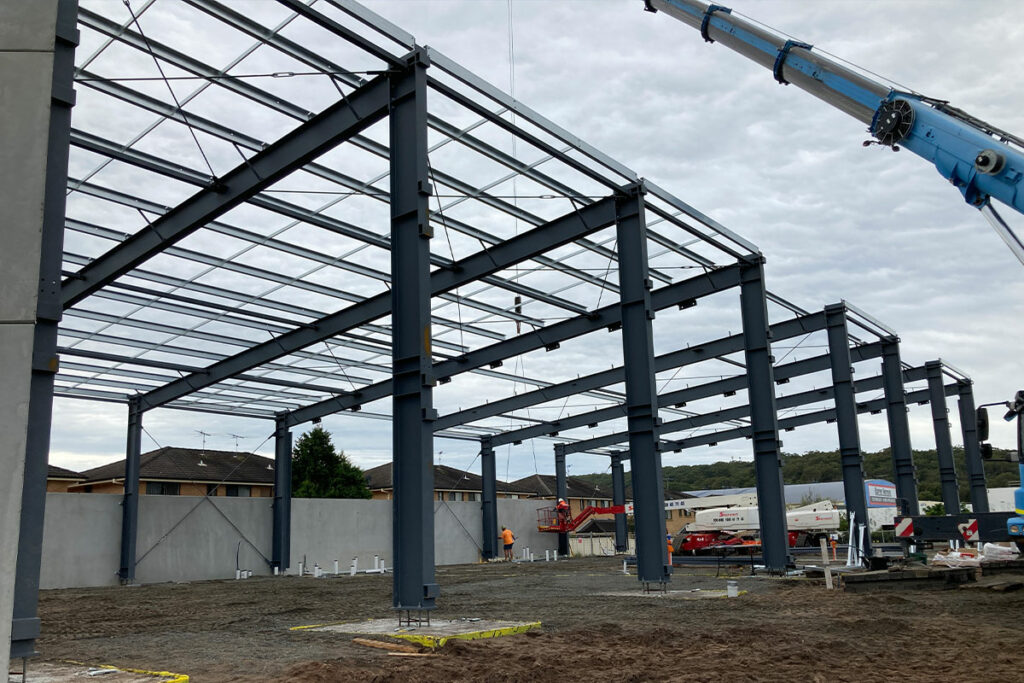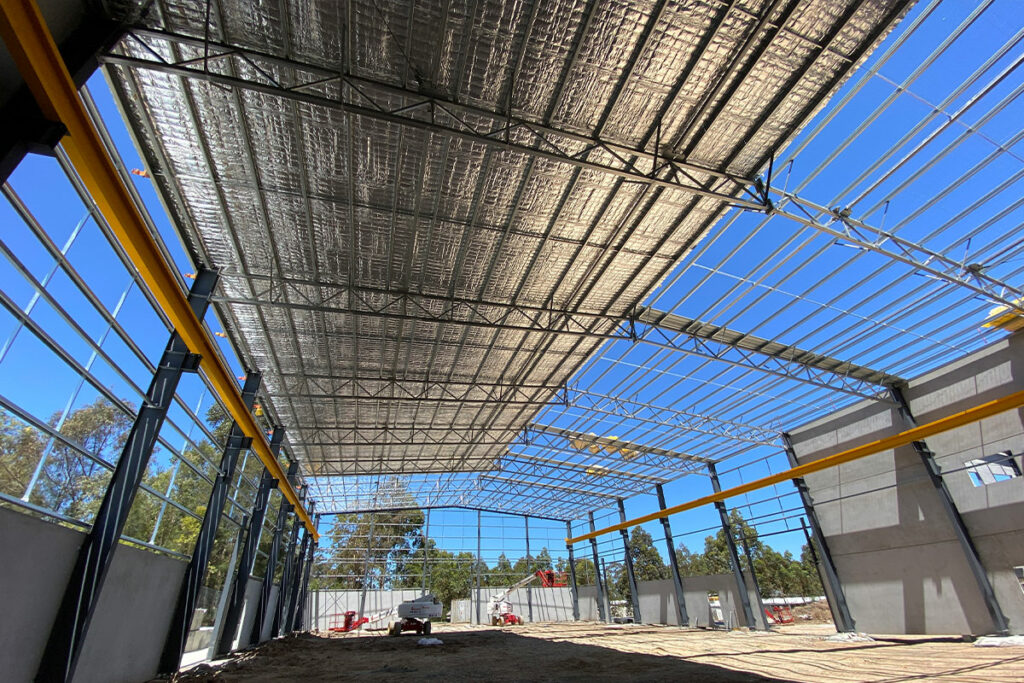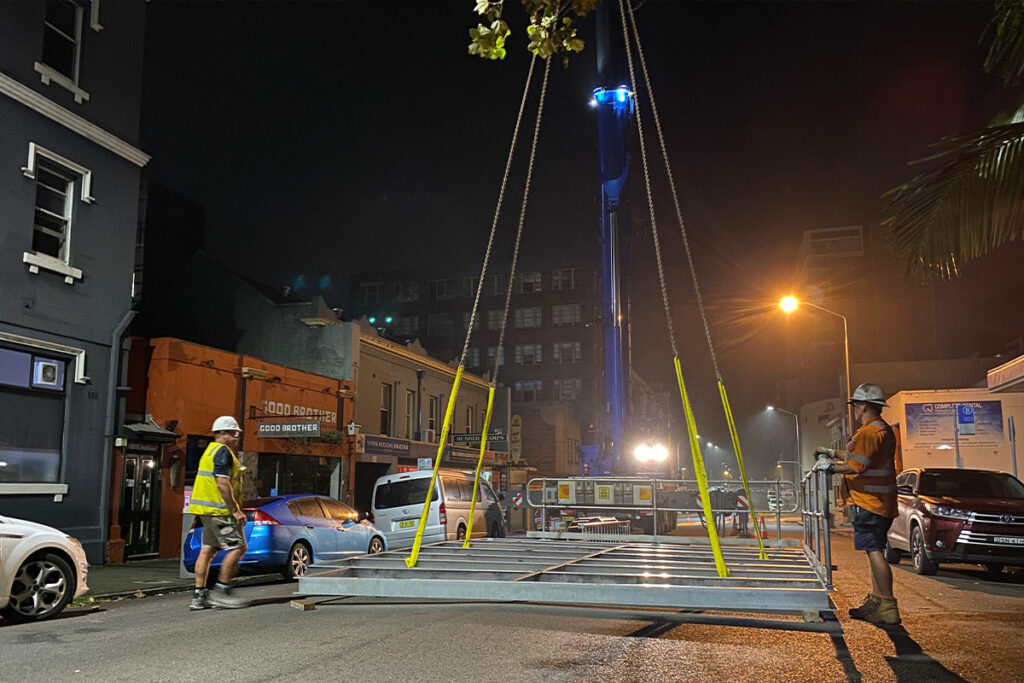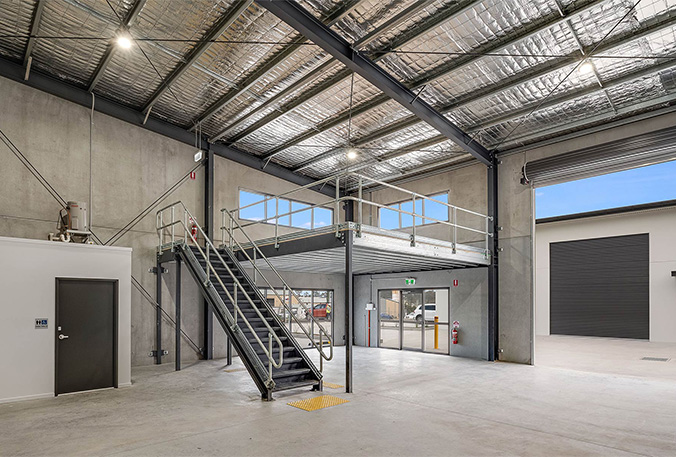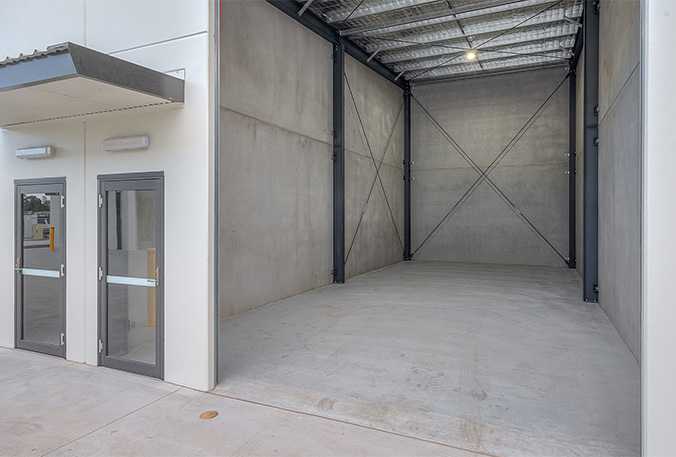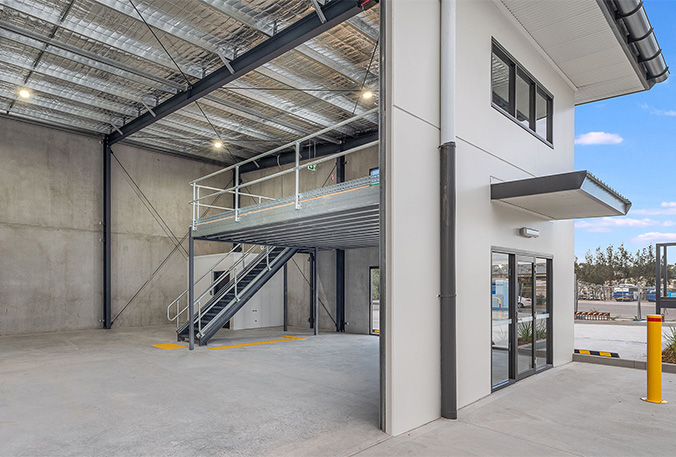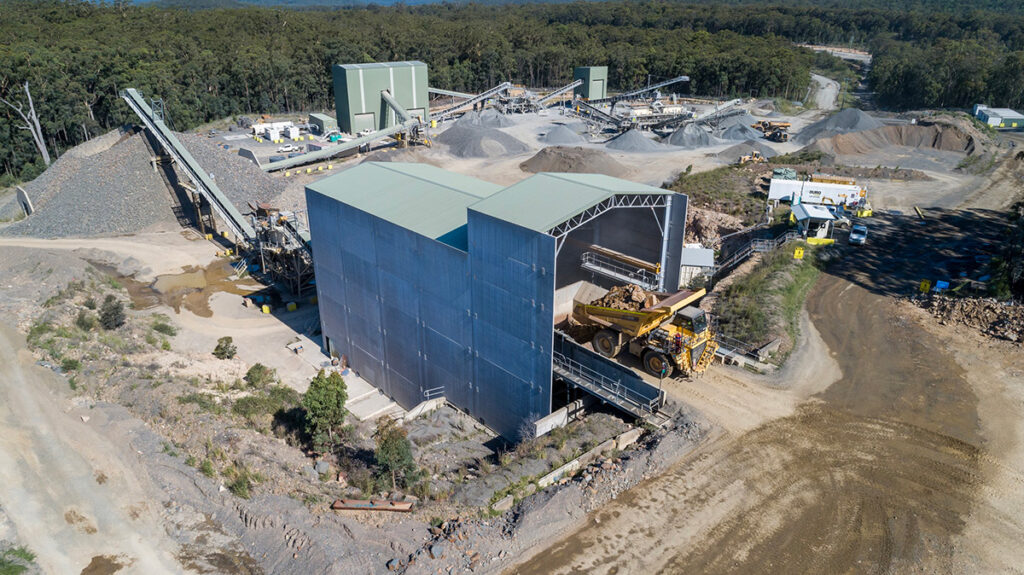Structural steel offers unmatched benefits for industrial construction:
1. Large Spans
Create open spaces without intermediate supports—ideal for warehouses and manufacturing facilities.
2. Ease of Modification
Easily expand or reconfigure steel structures to meet changing operational needs.
3. Utility Integration
Effortlessly incorporate electrical, plumbing, and HVAC systems into steel buildings.
4. Strength and Durability
With a high strength-to-weight ratio, structural steel withstands heavy loads, strong winds, and harsh conditions.
5. Speed of Construction
Steel frames can be quickly erected, reducing project timelines and costs.
6. Design Flexibility
Customise steel components to fit unique architectural styles and layouts, including clear-span structures.
7. Fire Resistance
Steel’s non-combustible nature ensures structural integrity during fires, surpassing other materials.
8. Energy Efficiency
Design steel buildings to reduce energy consumption and environmental impact.
9. Cost-Effectiveness
Enjoy long-term savings with minimal maintenance and extended building lifespan.
10. Sustainability
Steel is 100% recyclable, making it an eco-friendly choice with minimal construction waste.
11. Mezzanine Flooring
Easily add mezzanine levels to increase usable space without expanding the footprint.

